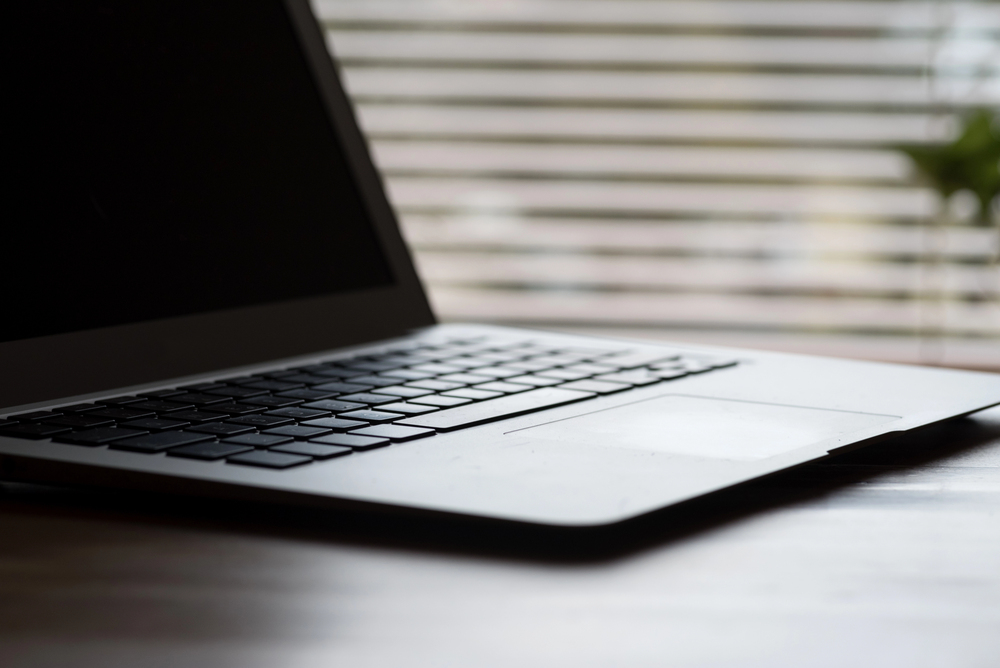Porn addiction, often referred to as compulsive sexual behavior disorder, is a condition characterized by an individual’s inability to control their consumption of pornographic material despite negative consequences. With the rise of the internet and easy access to explicit content, more people are grappling with porn addiction than ever before. This comprehensive guide aims to shed light on porn addiction, its causes, signs, and the steps toward effective recovery. Whether you or a loved one is facing this challenge, understanding the nature of the addiction and available resources is the first step toward healing.
Understanding Porn Addiction
What Is Porn Addiction?
Porn addiction is a behavioral addiction where an individual becomes dependent on pornography, often requiring increasing amounts of explicit material to achieve the same level of arousal or satisfaction. This addiction can interfere with daily life, relationships, work, and mental health.
Key Characteristics:
- Compulsive Use: Inability to control or reduce porn consumption despite attempts.
- Escalation: Needing more extreme or novel content to achieve the same effect.
- Negative Impact: Experiencing problems in personal relationships, work, or emotional well-being due to porn use.
- Withdrawal Symptoms: Feeling anxious, irritable, or depressed when not using pornography.
Is Porn Addiction Recognized Clinically?
While not officially classified as a standalone disorder in the Diagnostic and Statistical Manual of Mental Disorders (DSM-5), porn addiction falls under the umbrella of compulsive sexual behavior disorder, which is recognized by the World Health Organization in the International Classification of Diseases (ICD-11).
Causes of Porn Addiction
Understanding the underlying causes can aid in developing effective recovery strategies.
- Neurological Factors
- Dopamine Release: Pornography triggers the release of dopamine, the “feel-good” neurotransmitter, reinforcing the behavior.
- Reward Pathway Alteration: Repeated exposure can alter the brain’s reward system, leading to cravings and compulsive use.
- Psychological Factors
- Emotional Coping Mechanism: Using porn to escape from stress, anxiety, depression, or loneliness.
- Low Self-Esteem: Seeking validation or fulfillment through pornography.
- Environmental Factors
- Accessibility: The internet provides easy and private access to explicit content.
- Cultural and Social Influences: Societal normalization of pornography use.
- Co-occurring Disorders
- Mental Health Issues: Depression, anxiety, or other addictions can contribute to the development of porn addiction.
Signs and Symptoms of Porn Addiction
Recognizing the signs is crucial for early intervention.
Behavioral Signs:
- Excessive Time Spent: Spending significant amounts of time viewing pornography.
- Neglecting Responsibilities: Ignoring work, school, or family obligations.
- Isolation: Withdrawing from social activities to engage in porn use.
- Risky Behaviors: Viewing porn in inappropriate settings, such as at work or public places.
Emotional Signs:
- Mood Swings: Experiencing irritability or anger when unable to access porn.
- Shame and Guilt: Feeling embarrassed or remorseful after porn use.
- Depression and Anxiety: Worsening mental health symptoms.
Physical Signs:
- Sleep Disturbances: Insomnia or altered sleep patterns due to late-night viewing.
- Fatigue: Physical exhaustion from lack of sleep or overstimulation.
Impact of Porn Addiction
Porn addiction can have far-reaching consequences on various aspects of life.
- Relationships
- Emotional Distance: Reduced intimacy and connection with partners.
- Trust Issues: Secrecy and dishonesty about porn use can erode trust.
- Sexual Dysfunction: Issues like erectile dysfunction or decreased sexual satisfaction.
- Mental Health
- Increased Anxiety and Depression: Persistent feelings of hopelessness or anxiety.
- Low Self-Esteem: Negative self-image due to addiction.
- Professional and Academic Performance
- Decreased Productivity: Time spent on porn instead of work or studies.
- Job Loss or Academic Failure: Neglecting responsibilities leading to serious consequences.
- Legal and Ethical Consequences
- Inappropriate Use: Viewing illegal content or accessing porn in prohibited settings can result in legal issues.
The Science Behind Porn Addiction
Neurological Impact
- Desensitization: Over time, the brain becomes less responsive to normal stimuli, requiring more intense content.
- Hyperfrontality: Reduced activity in the prefrontal cortex, impairing decision-making and impulse control.
Psychological Dependence
- Conditioned Response: Associating pornography with pleasure reinforces the behavior.
- Escalation of Content: Seeking more extreme material to achieve the same level of arousal.
Steps Toward Recovery
Recovery from porn addiction is a journey that involves self-awareness, professional help, and ongoing support.
- Acknowledgment and Acceptance
- Self-Recognition: Admitting there is a problem is the first critical step.
- Understanding Triggers: Identifying situations, emotions, or thoughts that lead to porn use.
- Seeking Professional Help
- Therapy Options:
- Cognitive Behavioral Therapy (CBT): Helps identify and change negative thought patterns and behaviors.
- Dialectical Behavior Therapy (DBT): Focuses on emotional regulation and coping strategies.
- Psychodynamic Therapy: Explores underlying emotional issues contributing to the addiction.
- Medical Consultation:
- Assessment of Co-occurring Disorders: Addressing mental health conditions like depression or anxiety.
- Medication: In some cases, medications may be prescribed to manage symptoms.
- Building a Support System
- Support Groups:
- Sex Addicts Anonymous (SAA): A 12-step program offering peer support.
- Online Communities: Forums and groups for sharing experiences and encouragement.
- Family and Friends:
- Open Communication: Sharing struggles with trusted individuals.
- Involving Loved Ones: Partners or family members can participate in therapy sessions.
- Developing Coping Strategies
- Mindfulness and Meditation:
- Stress Reduction: Techniques to manage stress and reduce cravings.
- Emotional Awareness: Recognizing and accepting emotions without judgment.
- Healthy Habits:
- Physical Activity: Exercise to boost mood and reduce stress.
- Hobbies and Interests: Engaging in fulfilling activities to replace porn use.
- Implementing Practical Measures
- Digital Detox:
- Limiting Internet Access: Using apps or software to block explicit content.
- Time Management: Scheduling activities to reduce idle time.
- Accountability Partners:
- Regular Check-ins: Sharing progress with someone who supports recovery.
- Mutual Support: Encouraging each other to stay on track.
- Relapse Prevention
- Identifying Warning Signs:
- Recognizing Urges: Being aware of thoughts or feelings that precede relapse.
- Avoiding Triggers: Steering clear of situations that tempt porn use.
- Developing a Relapse Plan:
- Action Steps: Having strategies in place to respond to cravings.
- Support Network: Knowing who to contact when facing challenges.
Professional Treatment Options
- Inpatient Rehabilitation
- Structured Environment: Intensive therapy in a controlled setting.
- Comprehensive Care: Access to medical professionals, therapists, and support groups.
- Outpatient Programs
- Flexibility: Allows individuals to continue daily activities while receiving treatment.
- Regular Therapy Sessions: Scheduled appointments with therapists and counselors.
- Online Therapy
- Accessibility: Convenient for those unable to attend in-person sessions.
- Confidentiality: Provides privacy and comfort.
The Role of Technology in Recovery
- Internet Filters and Parental Controls
- Blocking Access: Software to restrict explicit content.
- Monitoring Usage: Tracking internet activity to stay accountable.
- Recovery Apps
- Progress Tracking: Apps that log days without porn use.
- Support Features: Reminders, motivational messages, and community forums.
Addressing Underlying Issues
- Emotional and Psychological Healing
- Trauma Resolution: Working through past experiences that contribute to addiction.
- Self-Esteem Building: Developing a positive self-image.
- Relationship Counseling
- Couples Therapy: Rebuilding trust and improving communication with partners.
- Family Therapy: Addressing family dynamics that may influence behavior.
Overcoming Stigma
- Breaking the Silence
- Open Dialogue: Encouraging conversations about porn addiction.
- Education: Dispelling myths and providing accurate information.
- Cultivating Empathy
- Understanding Addiction: Recognizing it as a mental health issue, not a moral failing.
- Supporting Others: Offering non-judgmental assistance to those struggling.
Success Stories and Testimonials
Case Study: Michael’s Journey to Recovery
Michael, a 35-year-old accountant, found his porn use escalating over the years. It began affecting his marriage and work performance. Realizing the impact, he sought help from a therapist specializing in sexual addictions. Through CBT and joining a support group, Michael learned to manage his triggers and develop healthier coping mechanisms. Over time, he rebuilt trust with his wife and improved his overall well-being.
Data and Statistics
- Prevalence: Studies suggest that up to 5% of adults may struggle with compulsive sexual behavior, including porn addiction.
- Age of Onset: Many individuals report starting porn use in adolescence.
- Impact on Relationships: Approximately 56% of divorce cases cite excessive porn use as a contributing factor.
Expert Opinions
Dr. Emily Saunders, Psychologist:
“Porn addiction is a complex issue that requires a multifaceted approach to treatment. Therapy, support networks, and personal commitment are key components to successful recovery.”
Dr. James Miller, Psychiatrist:
“Addressing co-occurring mental health disorders is crucial. Often, underlying issues like depression or anxiety fuel the addiction, and treating them can significantly aid in recovery.”
Frequently Asked Questions
Q1: Can porn addiction be cured?
A: While there is no one-size-fits-all cure, many individuals successfully recover through therapy, support, and lifestyle changes. Recovery is an ongoing process that involves managing triggers and maintaining healthy habits.
Q2: How long does recovery take?
A: Recovery timelines vary depending on the individual, the severity of the addiction, and the commitment to treatment. Some may see significant progress in months, while for others, it may take longer.
Q3: Is it necessary to quit pornography completely?
A: For many, complete abstinence is the most effective way to manage the addiction. Reducing use can be challenging due to the compulsive nature of the behavior.
Q4: Can medication help with porn addiction?
A: While there is no specific medication for porn addiction, medications may be prescribed to treat co-occurring conditions like depression or anxiety, which can support the recovery process.
Q5: How can I support a loved one struggling with porn addiction?
A: Offer non-judgmental support, encourage them to seek professional help, and consider participating in therapy sessions if appropriate.
Actionable Steps for Individuals Seeking Recovery
- Self-Assessment:
- Reflect on how porn use affects your life.
- Identify triggers and patterns in your behavior.
- Set Clear Goals:
- Define what recovery means to you.
- Establish realistic and measurable objectives.
- Seek Professional Help:
- Find a therapist experienced in treating sexual addictions.
- Consider different therapy modalities to find the best fit.
- Build a Support Network:
- Join support groups.
- Confide in trusted friends or family members.
- Develop Healthy Coping Mechanisms:
- Engage in physical activities.
- Practice mindfulness and stress-reduction techniques.
- Implement Practical Measures:
- Use technology to block explicit content.
- Schedule your day to minimize idle time.
- Monitor Progress:
- Keep a journal of your experiences.
- Celebrate milestones and acknowledge challenges.
The Role of Renew Health in Porn Addiction Recovery
At Renew Health, we are dedicated to providing comprehensive care for individuals struggling with porn addiction.
Our Approach Includes:
- Personalized Treatment Plans: Tailored strategies to address individual needs.
- Evidence-Based Therapies: Utilizing CBT, DBT, and other proven methods.
- Multidisciplinary Team: Collaborating with psychologists, psychiatrists, and counselors.
- Supportive Environment: Creating a safe space for healing and growth.
- Aftercare Services: Ongoing support to maintain recovery.
Take the first step toward reclaiming your life. Our team at Renew Health is here to support you on your journey to recovery.
Conclusion
Porn addiction is a challenging condition that can have profound effects on an individual’s life. However, with understanding, support, and the right treatment, recovery is entirely possible. Recognizing the addiction, seeking professional help, and committing to change are critical steps toward healing. Remember, you are not alone, and resources are available to guide you through this journey.

